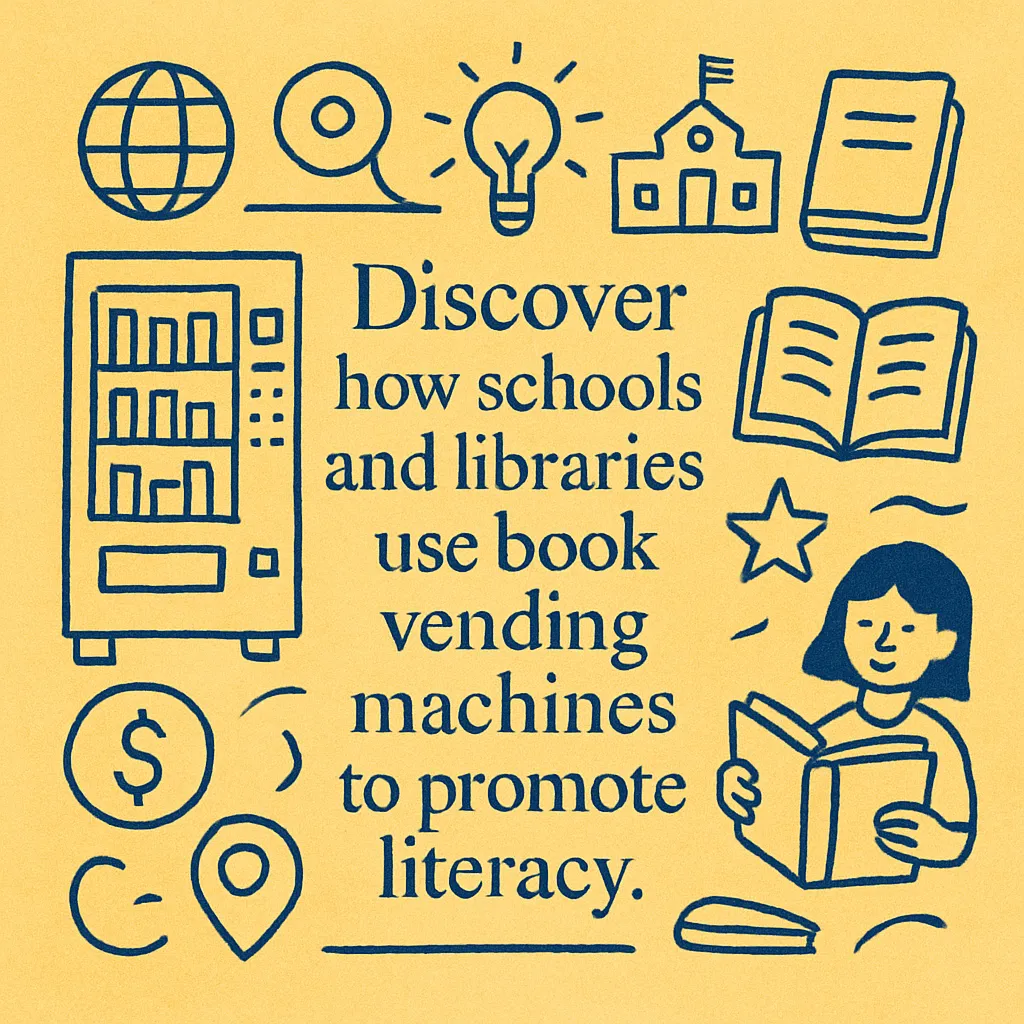Book Vending Machines
Discover how schools and libraries use book vending machines to promote literacy.
Back to Specialty Vending Machines ResourcesDiscover how schools and libraries use book vending machines to promote literacy.
Back to Specialty Vending Machines ResourcesBook vending machines transform how children and adults engage with reading, offering a unique and exciting way to access books outside traditional settings like bookstores or libraries.
![]() Spark reading excitement by making books a fun reward
Spark reading excitement by making books a fun reward
![]() Increase access to reading materials in schools and community centers
Increase access to reading materials in schools and community centers
![]() Promote literacy by integrating books into daily environments
Promote literacy by integrating books into daily environments

Book vending machines are emerging as innovative tools to foster a love for reading and enhance literacy in various settings. These engaging devices go beyond traditional vending concepts, offering a surprising and delightful way to acquire books. They are particularly effective in environments where convenient access to reading materials can make a significant impact, such as elementary schools, community centers, and public spaces.
For many, the act of receiving a book from a vending machine adds an element of fun and novelty, especially for younger learners. Schools often utilize book vending machines as part of reward programs, allowing students to earn tokens for good behavior or academic achievements, which they can then exchange for a new book. This approach not only incentivizes positive actions but also makes reading feel like an exciting reward rather than a chore. Such direct engagement with books at a young age can lead to lifelong reading habits.
One of the core benefits of book vending machines is their ability to place books directly into the hands of people who might not regularly visit a library or bookstore. Libraries, in particular, can leverage these machines to extend their outreach, positioning them in places like local clinics, community centers, or even busy transit hubs. This strategy helps overcome barriers to access, ensuring that books are available where people live, work, and spend their time. For those interested in expanding access to healthy options, consider how healthy vending machines for schools are boosting wellness, much like book machines boost literacy.
The success of a book vending machine often hinges on the selection of titles it offers. Operators carefully curate the collection to match the demographics and interests of the location. In schools, this means age-appropriate and engaging children's literature. In public areas, it might include a mix of popular fiction and non-fiction for all ages. This thoughtful curation ensures that users find books that genuinely interest them, increasing the likelihood of a positive reading experience. The selection process can be as detailed as choosing specific snacks for employee satisfaction, which is explored further in pages like snack machine options for employees.
As technology continues to evolve, so too will book vending machines. The appeal of instant access and the growing emphasis on literacy make them a valuable asset for educational institutions and community organizations. They represent a modern solution to an age-old goal: connecting people with the power of stories and knowledge. Understanding the diverse needs of different environments is crucial for successful integration, just as considering the placement strategies for various venues can be found in resources like optimal placement of vending machines in entertainment venues.
Book vending machines are automated systems that dispense books, promoting literacy and making reading materials accessible in various public and educational settings.
They encourage reading by making books exciting and easily available, often as rewards for good behavior or academic achievement, boosting student literacy and engagement.
Yes, libraries can extend their reach by placing book vending machines in community centers, schools, or other public spaces, offering access to books outside traditional library hours.
Selections often include popular children's books, age-appropriate fiction and non-fiction, and sometimes even local interest titles, depending on the machine's location and purpose.
Book selection is usually curated to match the target audience, considering age-appropriateness, reading levels, and popular appeal to maximize engagement.
Operational costs vary but are generally manageable, involving initial machine purchase, book restocking, and occasional maintenance. Many units are designed for durability and ease of use.
Many book vending machines offer customization options, allowing organizations to brand them with their logos, colors, or thematic designs to enhance visual appeal.
Users typically make a selection via a touchscreen, and the book is then dispensed, similar to a traditional vending machine. Some might integrate with reward systems.
Book vending machines offer instant gratification, 24/7 access (depending on location), and a novel, exciting way to acquire books, especially appealing to younger audiences.
Common locations include schools, libraries, community centers, airports, and other public spaces where promoting literacy and convenient access to books is desired.